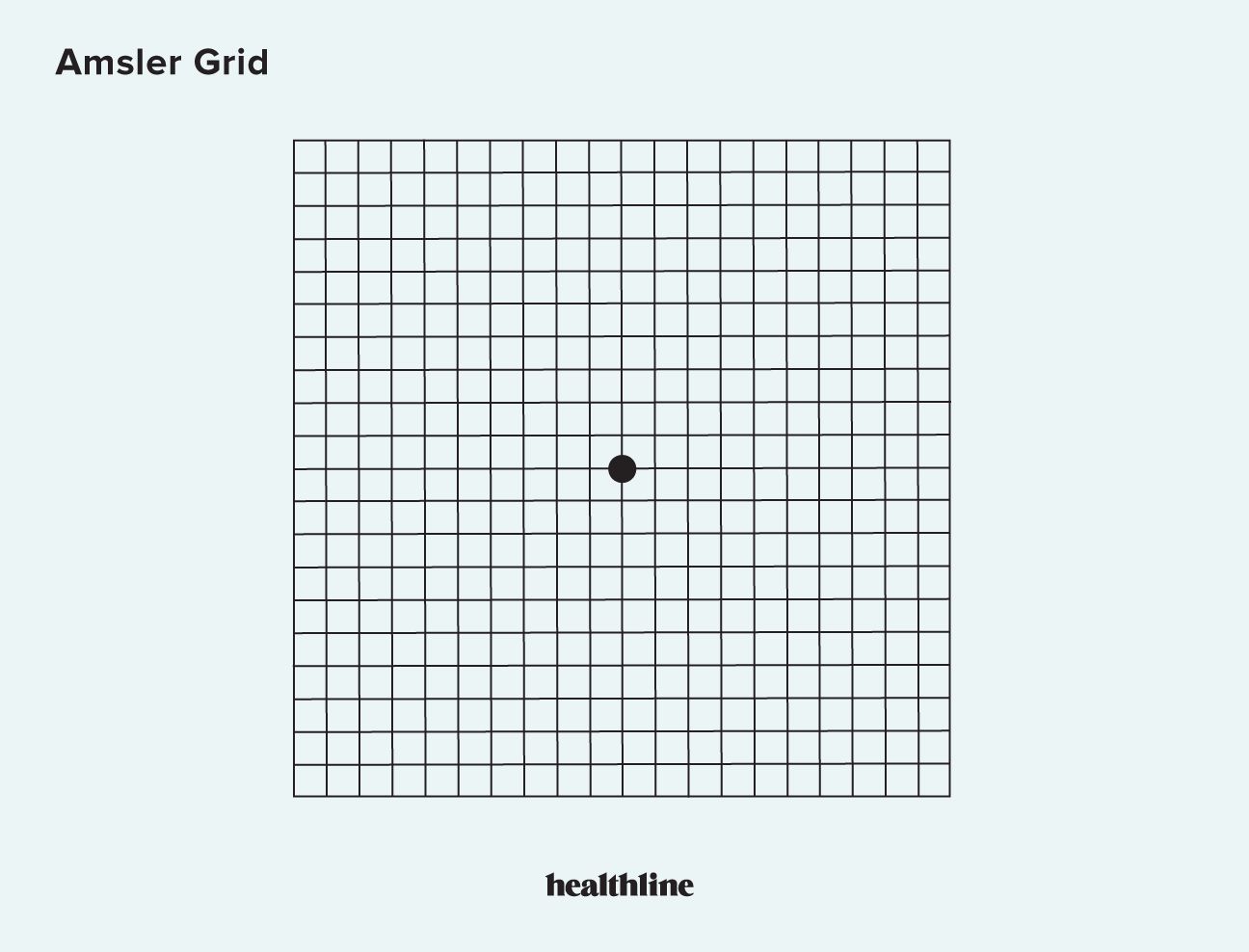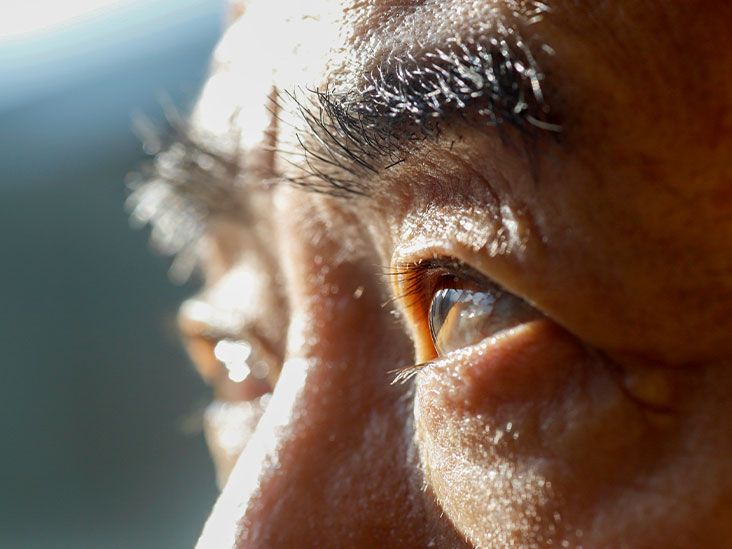Doctors might diagnose macular degeneration during a routine eye exam, but your doctor will likely perform additional tests, usually with a detailed imaging exam and Amsler grid tests.
Macular degeneration is a progressive eye disease where a part of your retina called the macula becomes damaged. As this damage progresses, you lose sight in the center of your field of vision, but you usually still have peripheral vision.
Your regular eye doctor or ophthalmologist may diagnose macular degeneration during routine vision exams.
Depending on your overall eye health, your symptoms, and how quickly your vision may be affected, different tests may be used to pinpoint the exact cause and severity of your vision loss.
This article explains the different tests that might help diagnose or rule out macular degeneration. It also looks at what the next steps might be if you receive a macular degeneration diagnosis.
Your doctor may find macular degeneration during a routine eye exam.
Some standard visions screening tests that can help check for macular degeneration or other vision problems
- a visual acuity exam (the chart with a large letter “E” at the top)
- an Amsler grid (a sheet of paper with a square grid pattern with a dot in the middle)
Amsler grid testing uses what looks like a piece of graph paper to help determine if your vision is being distorted. Usually, the lines on the Amsler grid should appear even and straight, but someone with macular degeneration may see these lines as wavy or distorted.
These initial screenings, along with your eye exam and medical history, may indicate if you have macular degeneration. Additional diagnostic testing may be needed, too.
There are a number of imaging studies that allow your doctor to visualize the health of your retina. Below are some of the tests that may be done, and what to expect from each.
- Fundus imaging: This test uses
noninvasiveTrusted Source photographic techniques to check for your retina before and after treatments. - Fundus angiography and indocyanine green angiography: In this test, the eye doctor injects a colored dye
into your veinTrusted Source . Once it begins to circulate through your body, your doctor uses imaging to track the flow of the dye through your retinal circulation. This helps identify changes in blood flow or leaking fluid, which is common in wet age-related macular degeneration. - Optical coherence tomography (OTC): This is another noninvasive test that uses light beams to produce a detailed image of your retina and the layers of blood vessels that supply it. Your eyes will usually be dilated for this exam.
If you have a family history of macular degeneration, or if you experience blurry vision, your doctor may check for macular degeneration.
The first thing an eye doctor will likely consider before making a diagnosis of macular degeneration is your personal health and lifestyle, as well as your family medical history. Certain lifestyle factors such as smoking can
If you’re at risk of developing this condition, a doctor or ophthalmologist may want to perform more regular or frequent assessments of your vision. This testing can include regular eye exams or additional testing.
Artificial intelligence (AI) is gaining popularity in testing for a number of conditions, and macular degeneration is no exception. AI is being used to help diagnose a number of eye diseases based on databases of imaging studies.
However, the accuracy of these tests depends on the quality of the images placed into the database in the first place.
There may be computer models that can help you gauge your personal risk of developing macular degeneration, but an accurate diagnosis can only be made after an individualized examination and testing by a doctor.
Before your appointment with your eye doctor, you may wish to use the Amsler grid at home.
Using the Amsler grid at home
While there are no true diagnostic tests for macular degeneration online, a doctor may suggest that you check your visual acuity regularly at home if you’re at risk of certain ophthalmologic diseases.
One way to do this is with the Amsler grid. You can print this grid off from the internet, or your doctor may supply you with one. Each day, you can use this grid to check for visual acuity, with instructions to let your doctor know if the lines on the grid become more blurry or distorted over time.
The steps for using the Amsler grid are as follows:
- Put on your glasses, if you wear them.
- Hold the grid 12 to 15 inches from your face.
- Cover one eye.
- Look at the dot in the center of the grid and observe whether the lines around it appear blurry or distorted.
- Repeat this test with the other eye.
- Perform this test daily or as instructed by your doctor.
Notify your doctor immediately if you notice changes in the appearance of the grid, especially if the lines become distorted.
Learn more about using the Amsler grid.
If you’ve received a macular degeneration diagnosis, the next step will be to determine the type of macular degeneration you have and develop a treatment plan.
Dry age-related macular degeneration is the most common form of this condition, accounting for about 80% of age-related macular degeneration (AMD).
There are no specific treatments for this kind of macular degeneration, unless you AMD with geographic atrophy. If you have AMD with geographic atrophy, your doctor may recommend avacincaptad pegol or pegcetacoplan.
In general, your ophthalmologist may recommend that you take a daily supplement that’s a combination of vitamins or nutrients such as:
- vitamin C
- vitamin E
- copper
- lutein
- zeaxanthin
- zinc
Your doctor may also suggest lifestyle changes such as quitting smoking if you smoke.
If you have wet AMD, vision loss can be more severe and happen more quickly, but there are more treatment options. These include:
- anti–vascular endothelial growth factor (anti-VEGF) injections
- intravenous (IV) photodynamic therapy,
- laser surgery
An initial diagnosis for macular degeneration might be made during routine vision testing, but your doctor will likely perform at least one other type of test to confirm the diagnosis or rule out other eye conditions that might cause vision loss.
Tests that can help confirm a macular degeneration diagnosis include visual acuity exams, Amsler grid tests, fundus imaging and angiography, indocyanine green angiography, and optical coherence tomography.
While there are tests that you can find online to check your visual acuity or risk factors for macular degeneration, only an eye doctor can make an official diagnosis.










